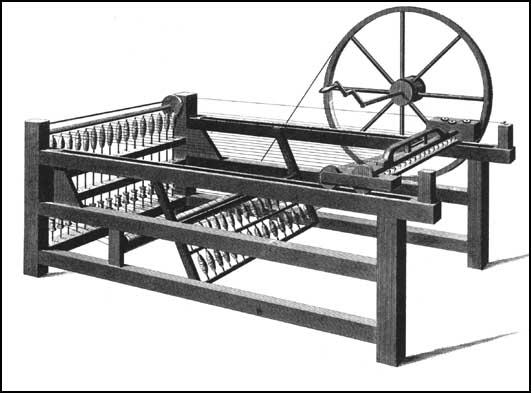Spinning Jenny
James Hargreaves was a weaver living in the village of Stanhill in Lancashire. It is claimed that one day his daughter Jenny, accidentally knocked over over the family spinning wheel. The spindle continued to revolve and it gave Hargreaves the idea that a whole line of spindles could be worked off one wheel.
In 1764 Hargreaves built what became known as the Spinning-Jenny. The machine used eight spindles onto which the thread was spun from a corresponding set of rovings. By turning a single wheel, the operator could now spin eight threads at once. Later, improvements were made that enabled the number to be increased to eighty. The thread that the machine produced was coarse and lacked strength, making it suitable only for the filling of weft, the threads woven across the warp.
Hargreaves did not apply for a patent for his Spinning Jenny until 1770 and therefore others copied his ideas without paying him any money. It is estimated that by the time James Hargreaves died in 1778, over 20,000 Spinning-Jenny machines were being used in Britain.

